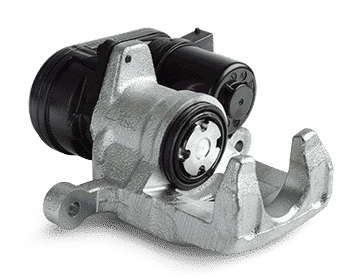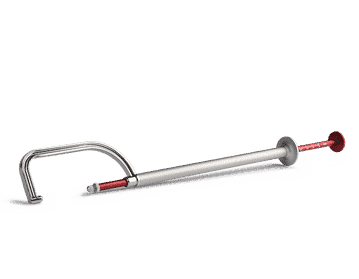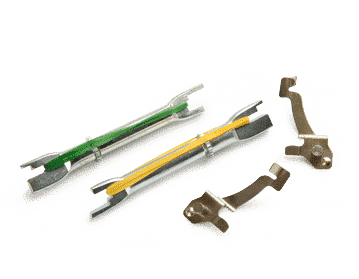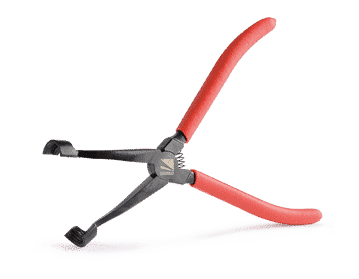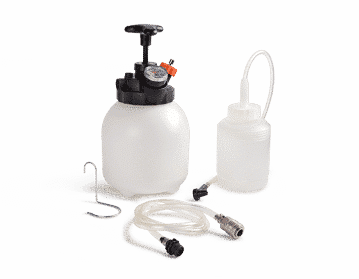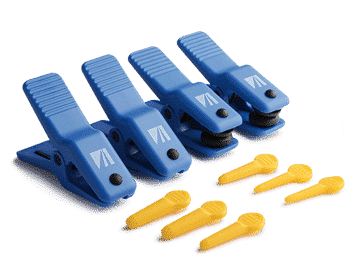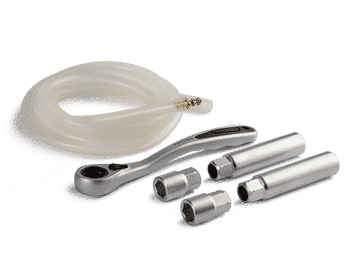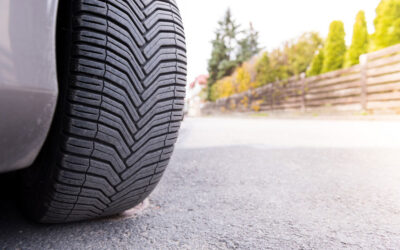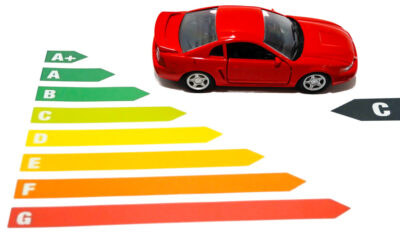JAKOPARTS –
ORIGINAL-QUALITY BRAKE PARTS
ALL YOU NEED FOR CHANGING BRAKES. EVERYTHING FROM A SINGLE SOURCE
Drum brakes, brake blocks, brake shoes, brake discs. Jakoparts – original brake parts of the highest quality.
The full range for Asian vehicles. Perfectly fitting. Certified. Guaranteed. Nowadays,
levels of effort and hours worked are optimised at modern workshops.
This is just one of the many customer requirements we have fulfilled for years with our practical, high-quality products and repair solutions.
Everything from a single source!
» REPLACING BRAKE DISCS AND PADS MADE EASY – FITTING PERFECTLY AND CERTIFIED
You can rely on brake discs and pads from our Jakoparts product range. Maximum safety and customer satisfaction are guaranteed thanks to continuous quality control of our ECE R90-certified brake discs and pads and our cooperation with TÜV Nord. All our brake discs are coated. This means they no longer need to be degreased. To save you time when replacing brake discs and to simplify the work operation. When replacing brake discs, the recommendation for running-in made in our installation instructions must be observed without fail.
- More than 700 references for Asian vehicles with a vehicle coverage of over 95 %
- Brake discs certified according to ECE-R90
- Coating offers protection against corrosion
- Perfect look for aluminium rims
- High temperature resistance
- Ease of handling thanks to low weight
- Maximum brake comfort through use of high-quality materials
- Regular material analyses conducted by an independent laboratory
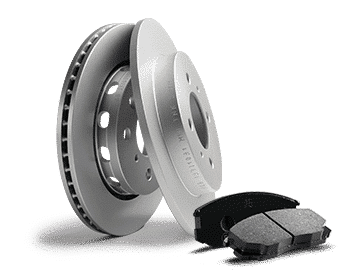
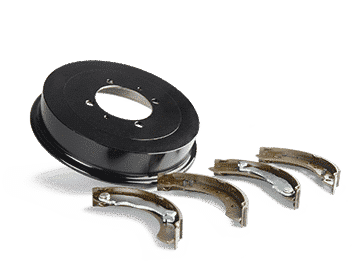
» DRUM BRAKE
Drum brakes are becoming ever rarer in cars today. Drum brakes essentially consist of the brake drum, brake shoes, wheel cylinder, armature plate, adjusting mechanism, return springs and various fasteners. During braking, the wheel cylinder forces the fixed brake shoes apart and presses them onto the brake drum, which decelerates the wheel as a result. Drum brakes have decisive advantages over a disc-brake system. As it is a closed system, it is protected against environmental influences. It is also easier to incorporate a park brake into the system. The system can withstand longer downtimes, has a long service life and is cost-effective.
» BRAKE HYDRAULICS
In the brake hydraulics, the brake power is transferred via the brake fluid from the brake master cylinder to the individual wheel brake cylinders for the disc or drum brakes. When the engine is running, the pressure in the main brake cylinder created by pressing the brake pedal is augmented significantly by vacuum, so that greater deceleration can be achieved with a small amount of force on the pedal. As the pressure in the closed system is constant, the brake forces are automatically distributed to the wheel brakes evenly and synchronously. Hydraulic brakes have low friction losses when transferring forces and can be metered very easily.
Always fresh, little effort required: brake cylinders from the Jakoparts range for Asian vehicle models offer quality-controlled safety and reliability for both you and your customers.

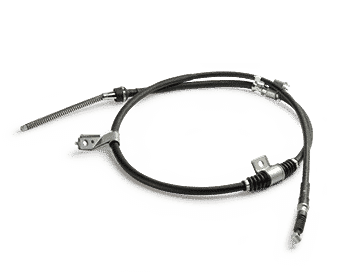
» PARK BRAKE
For a fast get-away: with complete solutions from the Jakoparts range, your retrofitting business for Asian vehicles won’t be held back by a pit stop. Punctuality guaranteed for all standard models.
The park brake performs the important function of providing extra security to a parking vehicle, or acting as an auxiliary brake in the event of the service brake failing. It works by permanently locking the vehicle’s wheels. It must be independent from the service brake and act upon all wheels on the rear axle. The park brake is also known as the cable brake, as it is operated as such using a hand or foot lever. Perfectly fitting replacement brakes: an example from practice
With over 18,500 vehicle-specific parts in our Jakoparts product range, we supply a comprehensive portfolio of products for Japanese and Korean vehicle models. Brake replacements are incredibly easy thanks to the assignment of perfectly fitting parts!
Perfectly fitting replacement brakes: an example from practice
With over 18,500 vehicle-specific parts in our Jakoparts product range, we supply a comprehensive portfolio of products for Japanese and Korean vehicle models. Brake replacements are incredibly easy thanks to the assignment of perfectly fitting parts!
How long is your braking distance?
The fact that the stopping distance during braking is made up of the reaction distance and the actual stopping distance is a classic of driving school knowledge. But how is the stopping distance calculated? Our video has the answer for you!
Preventing defects and reducing the frequency and cost of repairs
Repairs to motor vehicles are becoming less frequent, at least when it comes to wearing parts. For example, the statistical frequency of repairs per car fell to 0.39 last year. Four years ago, this figure was still over 0.5. There are three main reasons for this. Components such as timing belts, brake pads and clutches have become more durable. In addition, the willingness to invest has fallen, as has the overall mileage. But what can drivers do to prevent vehicle defects and reduce their repair costs at the same time?
Just a few independent and routine vehicle checks can help prevent expensive secondary damage. In most cases, a simple visual inspection is sufficient. This is also advised by GTÜ (Gesellschaft für Technische Überwachung mbH) and recommended for modern vehicles. The checklist provided by GTÜ can also help.
Tips for regular checks of your own vehicle
Check fluids regularly
Drivers can regularly check the filling levels of their fluids. This includes the coolant, brake fluid and power steering fluid. Of course, it is also very important to check the oil level. All fluids should be between the MIN and MAX markings and neither above nor below them. The car should obviously be parked on a level surface if possible. If there are any unusual losses, you should look for a potential leak.
Indispensable: a regular tyre check
The next step is to check your tyres regularly. The air pressure should be checked every fortnight if possible. This is also advisable if the vehicle has a particularly heavy load. In addition to air pressure, the age and tread depth of the tyres are also important. There are no specific regulations regarding age, but it is recommended that tyres are changed after six to eight years, or earlier if they are damaged. The minimum tread depth is 1.6 millimetres for summer tyres and 4 millimetres for winter tyres. Here too, the rule is: the more, the better.
Vehicle lighting function check
Of course, the entire vehicle lighting system must also function properly. In modern vehicles, a control lamp usually indicates that something is wrong with the vehicle lighting. In older vehicles, the only option is to check it yourself.
Check the condition of the car battery
The service life of car batteries varies greatly and also depends on how much they are used. If you often only drive short distances, you should expect the battery's performance to deteriorate more quickly. Modern vehicle equipment such as air conditioning, seat heating and automatic start-stop systems can also put additional strain on the battery. But how does a weak battery become noticeable? One possible indication is that the starter motor cranks audibly slower. A garage can also test the condition of the battery with an appropriate measuring device.
Take maintenance intervals seriously
Maintenance intervals must be taken seriously and adhered to in accordance with the manufacturer's instructions. If they are not adhered to, this can lead to a maintenance backlog, which in turn can lead to a build-up of faults, defects and signs of wear and jeopardise your own safety. Of course, the maintenance intervals also depend on the vehicle's own mileage. By adhering to the maintenance intervals, you also prevent possible major damage.
Outlook
It remains to be seen whether the frequency of repairs will continue to fall. This also depends on electric cars, as we might expect their higher weight to result in greater wear on the chassis. Software issues could also become more significant in the future. These tend to occur in younger vehicles in particular. Infotainment, connectivity and assistance systems come to mind here.
Advantages and disadvantages of all-season tyres
All-season tyres, often also known as all-weather tyres, are becoming increasingly popular. This is the conclusion drawn by the portal reifen.com. But what exactly are the differences and which tyre version is better suited to what type of people? The main differences are in the tyre profile and in the type of rubber used. All-season tyres can be driven all year round, provided they bear the Alpine symbol (3PMSF). This is prescribed for all-season tyres from year of production 2018. Only tyres with this snowflake symbol are actually approved for use as winter tyres. There is a transition period for M+S tyres produced until the end of 2017. These can still be used as winter tyres until 30.09. of this year.
What are the characteristics of a summer tyre?
Summer tyres are made of a slightly harder rubber and usually have a rougher profile, which means that they grip better in the rain, displace the water better and thus protect against aquaplaning. They also cope well with high temperatures and the rubber compound used guarantees safe driving on hot roads even at temperatures around 40 degrees Celsius. The braking power is good in both wet and dry conditions. It is important to know that the rubber compound of summer tyres hardens at temperatures below 7 degrees Celsius and thus loses its performance characteristics, especially on wet road surfaces. So you should never drive with summer tyres in winter.
And what about winter tyres?
The profile of winter tyres usually has many small fins and a larger tread depth. These ensure better grip in winter road conditions such as ice and snow, resulting in shorter braking distances. The rubber compound used is specially designed for cold temperatures, as it remains elastic even in frost and can thus adapt better to the surface structure of the road. Winter tyres are marked with the Alpine symbol (3PMSF mark).
All-season tyres - a compromise?
All-season tyres have a mixture of longitudinal grooves and fins and the rubber compound is a little softer and therefore more similar to the rubber compound of winter tyres. As a result, they combine the properties of summer and winter tyres. However, all-season tyres cannot match real winter tyres in extreme weather conditions. As with winter and summer tyres, a minimum tread depth of 1.6 millimetres is also required for all-season tyres, a minimum profile depth of 3 to 4 millimetres is recommended. It should also be noted that all-season tyres wear much faster, as they are driven all year round.
Conclusion
There is no clear recommendation. Ultimately, every driver has to decide which tyres are best suited for their requirements. For anyone who drives frequently in winter weather, perhaps even lives in the mountains and/or regularly go skiing, traditional winter tyres are the best option. All-season tyres can be a good compromise for anyone who prefers to leave the car at home in winter weather or only drives in the city and milder regions. After all, they combine the strengths of winter and summer tyres. Another advantage is that there is no need for the annoying tyre change and no storage space is required for the tyres that are currently not required. This saves time and money.
The new passenger car energy label
For many car dealerships and car dealers, it came very suddenly - the new passenger car energy label replacing the previous energy efficiency classes with the specification of a CO2 class. It came into force on 23 February without a transition period. Hardly feasible, as many car dealers note. The Central Association of the German Motor Vehicle Industry (ZDK) has also criticised this approach. If dealers fail to implement this change in time, they can expect warnings.
It came very suddenly, the new passenger car energy labelling regulation (Pkw-EnVKV). In concrete terms, this means: From 23 February 2024, all energy labels issued or published must meet the new requirements, there was no transition period. This was due to the Europe-wide switch to the WLTP test method (Worldwide harmonized Light vehicles Test Procedure).
So what's new?
In contrast to the previous energy label, which divided the vehicles into efficiency classes and only took consumption and emissions values into account, the new label divides the vehicles into CO2 classes and also contains additional information. This includes the amount of vehicle tax, the energy costs at a mileage of 15,000 kilometres per year and possible CO2 costs over the next ten years with an annual mileage of 15,000 kilometres.
One particular issue for dealers is that they have to state the expected CO2 costs over ten years. This involves a considerable amount of bureaucratic effort. They either have to request the data from the manufacturers or gather the details themselves in a different way. One saving grace is that labels created before 23/02/24 may still be used until 1 May this year. For advertising fonts and electronic, magnetic or visual storage media, the deadline is even 1 August this year.
What is the reason for the new passenger car energy label?
The new energy label is intended to provide consumers with better information regarding the energy efficiency of vehicle models. The vehicles are divided into seven CO2 efficiency classes, starting with the best energy efficiency class A, through to the worst class G. The aim is to reduce emissions from road traffic by encouraging consumers to buy cars with the lowest possible pollutant levels. There will be five energy labels in total, one for each type of fuel: Petrol, diesel, natural gas, pure electric vehicles and plug-in hybrids. The German government aims to improve acceptance with the introduction of the new energy label.
Preventing defects and reducing the frequency and cost of repairs
Repairs to motor vehicles are becoming less frequent, at least when it comes to wearing parts. For example, the statistical frequency of repairs per car fell to 0.39 last year. Four years ago, this figure was still over 0.5. There are three main reasons for this. Components such as timing belts, brake pads and clutches have become more durable. In addition, the willingness to invest has fallen, as has the overall mileage. But what can drivers do to prevent vehicle defects and reduce their repair costs at the same time?
Just a few independent and routine vehicle checks can help prevent expensive secondary damage. In most cases, a simple visual inspection is sufficient. This is also advised by GTÜ (Gesellschaft für Technische Überwachung mbH) and recommended for modern vehicles. The checklist provided by GTÜ can also help.
Tips for regular checks of your own vehicle
Check fluids regularly
Drivers can regularly check the filling levels of their fluids. This includes the coolant, brake fluid and power steering fluid. Of course, it is also very important to check the oil level. All fluids should be between the MIN and MAX markings and neither above nor below them. The car should obviously be parked on a level surface if possible. If there are any unusual losses, you should look for a potential leak.
Indispensable: a regular tyre check
The next step is to check your tyres regularly. The air pressure should be checked every fortnight if possible. This is also advisable if the vehicle has a particularly heavy load. In addition to air pressure, the age and tread depth of the tyres are also important. There are no specific regulations regarding age, but it is recommended that tyres are changed after six to eight years, or earlier if they are damaged. The minimum tread depth is 1.6 millimetres for summer tyres and 4 millimetres for winter tyres. Here too, the rule is: the more, the better.
Vehicle lighting function check
Of course, the entire vehicle lighting system must also function properly. In modern vehicles, a control lamp usually indicates that something is wrong with the vehicle lighting. In older vehicles, the only option is to check it yourself.
Check the condition of the car battery
The service life of car batteries varies greatly and also depends on how much they are used. If you often only drive short distances, you should expect the battery's performance to deteriorate more quickly. Modern vehicle equipment such as air conditioning, seat heating and automatic start-stop systems can also put additional strain on the battery. But how does a weak battery become noticeable? One possible indication is that the starter motor cranks audibly slower. A garage can also test the condition of the battery with an appropriate measuring device.
Take maintenance intervals seriously
Maintenance intervals must be taken seriously and adhered to in accordance with the manufacturer's instructions. If they are not adhered to, this can lead to a maintenance backlog, which in turn can lead to a build-up of faults, defects and signs of wear and jeopardise your own safety. Of course, the maintenance intervals also depend on the vehicle's own mileage. By adhering to the maintenance intervals, you also prevent possible major damage.
Outlook
It remains to be seen whether the frequency of repairs will continue to fall. This also depends on electric cars, as we might expect their higher weight to result in greater wear on the chassis. Software issues could also become more significant in the future. These tend to occur in younger vehicles in particular. Infotainment, connectivity and assistance systems come to mind here.
Advantages and disadvantages of all-season tyres
All-season tyres, often also known as all-weather tyres, are becoming increasingly popular. This is the conclusion drawn by the portal reifen.com. But what exactly are the differences and which tyre version is better suited to what type of people? The main differences are in the tyre profile and in the type of rubber used. All-season tyres can be driven all year round, provided they bear the Alpine symbol (3PMSF). This is prescribed for all-season tyres from year of production 2018. Only tyres with this snowflake symbol are actually approved for use as winter tyres. There is a transition period for M+S tyres produced until the end of 2017. These can still be used as winter tyres until 30.09. of this year.
What are the characteristics of a summer tyre?
Summer tyres are made of a slightly harder rubber and usually have a rougher profile, which means that they grip better in the rain, displace the water better and thus protect against aquaplaning. They also cope well with high temperatures and the rubber compound used guarantees safe driving on hot roads even at temperatures around 40 degrees Celsius. The braking power is good in both wet and dry conditions. It is important to know that the rubber compound of summer tyres hardens at temperatures below 7 degrees Celsius and thus loses its performance characteristics, especially on wet road surfaces. So you should never drive with summer tyres in winter.
And what about winter tyres?
The profile of winter tyres usually has many small fins and a larger tread depth. These ensure better grip in winter road conditions such as ice and snow, resulting in shorter braking distances. The rubber compound used is specially designed for cold temperatures, as it remains elastic even in frost and can thus adapt better to the surface structure of the road. Winter tyres are marked with the Alpine symbol (3PMSF mark).
All-season tyres - a compromise?
All-season tyres have a mixture of longitudinal grooves and fins and the rubber compound is a little softer and therefore more similar to the rubber compound of winter tyres. As a result, they combine the properties of summer and winter tyres. However, all-season tyres cannot match real winter tyres in extreme weather conditions. As with winter and summer tyres, a minimum tread depth of 1.6 millimetres is also required for all-season tyres, a minimum profile depth of 3 to 4 millimetres is recommended. It should also be noted that all-season tyres wear much faster, as they are driven all year round.
Conclusion
There is no clear recommendation. Ultimately, every driver has to decide which tyres are best suited for their requirements. For anyone who drives frequently in winter weather, perhaps even lives in the mountains and/or regularly go skiing, traditional winter tyres are the best option. All-season tyres can be a good compromise for anyone who prefers to leave the car at home in winter weather or only drives in the city and milder regions. After all, they combine the strengths of winter and summer tyres. Another advantage is that there is no need for the annoying tyre change and no storage space is required for the tyres that are currently not required. This saves time and money.
The new passenger car energy label
For many car dealerships and car dealers, it came very suddenly - the new passenger car energy label replacing the previous energy efficiency classes with the specification of a CO2 class. It came into force on 23 February without a transition period. Hardly feasible, as many car dealers note. The Central Association of the German Motor Vehicle Industry (ZDK) has also criticised this approach. If dealers fail to implement this change in time, they can expect warnings.
It came very suddenly, the new passenger car energy labelling regulation (Pkw-EnVKV). In concrete terms, this means: From 23 February 2024, all energy labels issued or published must meet the new requirements, there was no transition period. This was due to the Europe-wide switch to the WLTP test method (Worldwide harmonized Light vehicles Test Procedure).
So what's new?
In contrast to the previous energy label, which divided the vehicles into efficiency classes and only took consumption and emissions values into account, the new label divides the vehicles into CO2 classes and also contains additional information. This includes the amount of vehicle tax, the energy costs at a mileage of 15,000 kilometres per year and possible CO2 costs over the next ten years with an annual mileage of 15,000 kilometres.
One particular issue for dealers is that they have to state the expected CO2 costs over ten years. This involves a considerable amount of bureaucratic effort. They either have to request the data from the manufacturers or gather the details themselves in a different way. One saving grace is that labels created before 23/02/24 may still be used until 1 May this year. For advertising fonts and electronic, magnetic or visual storage media, the deadline is even 1 August this year.
What is the reason for the new passenger car energy label?
The new energy label is intended to provide consumers with better information regarding the energy efficiency of vehicle models. The vehicles are divided into seven CO2 efficiency classes, starting with the best energy efficiency class A, through to the worst class G. The aim is to reduce emissions from road traffic by encouraging consumers to buy cars with the lowest possible pollutant levels. There will be five energy labels in total, one for each type of fuel: Petrol, diesel, natural gas, pure electric vehicles and plug-in hybrids. The German government aims to improve acceptance with the introduction of the new energy label.
Please contact us
*Required fields
Herth+Buss Fahrzeugteile GmbH & Co. KG
Dieselstraße 2-4
63150 Heusenstamm
Germany
+49 (0)6104-608-0
info@herthundbuss.com


